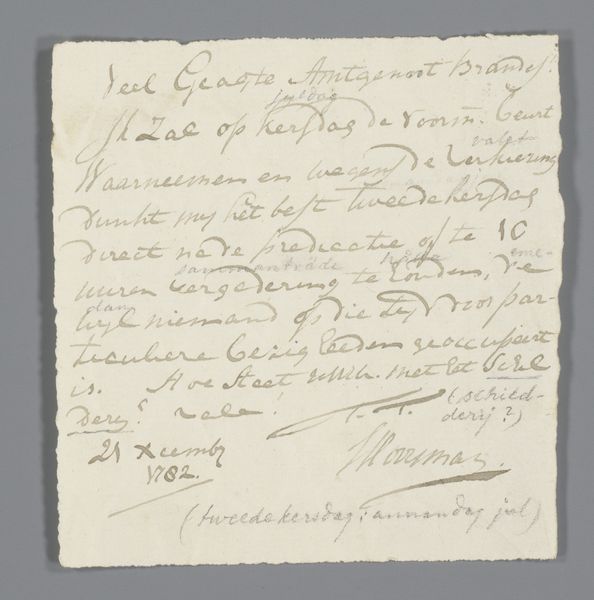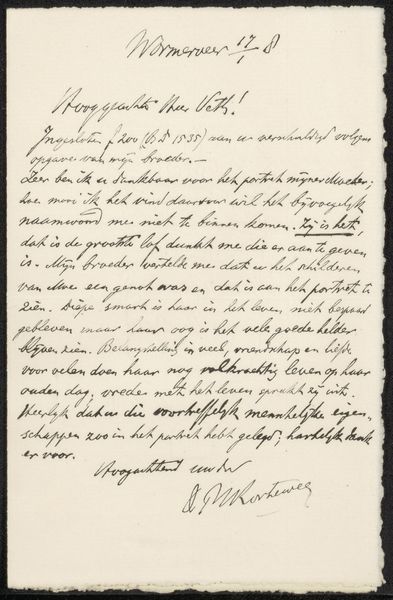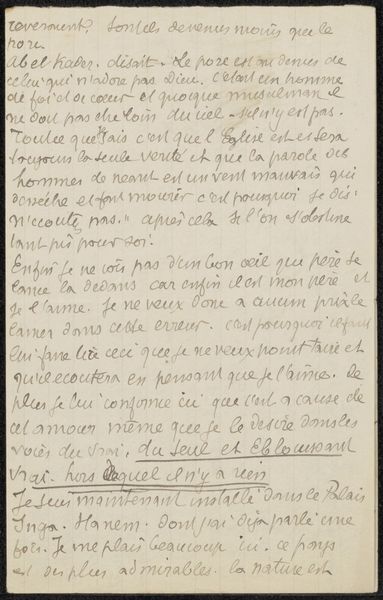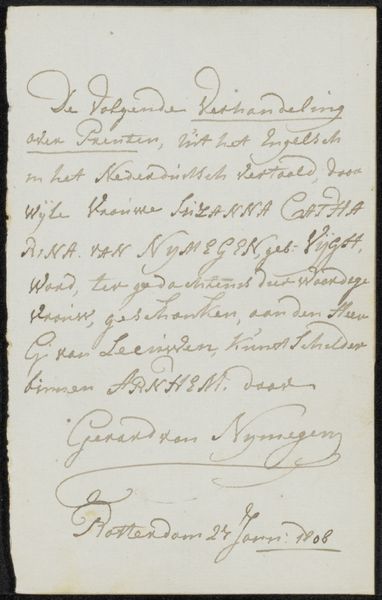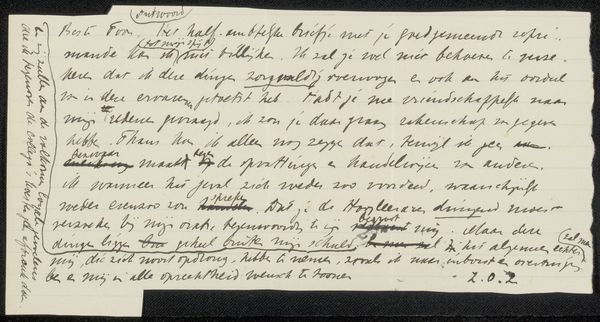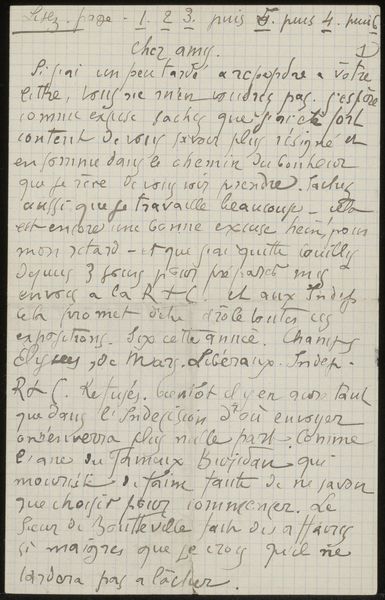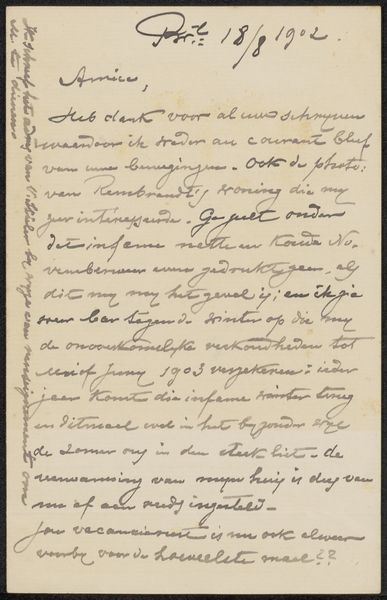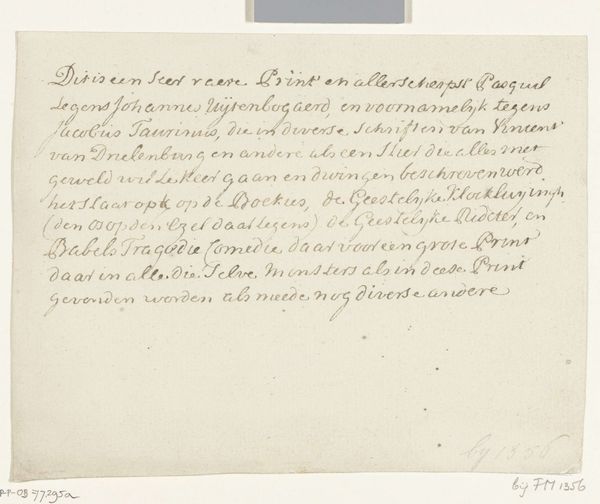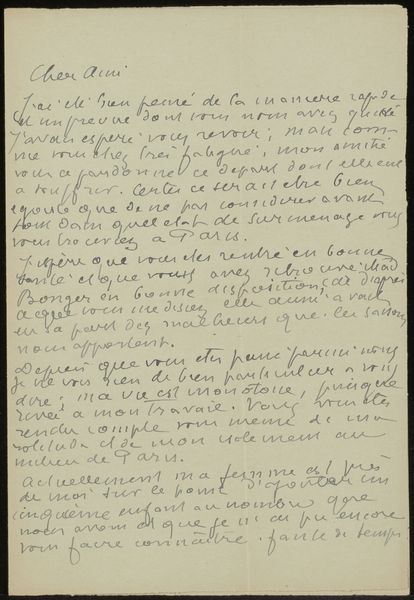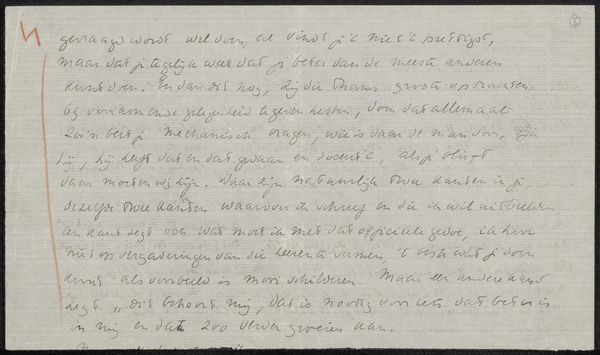
drawing, paper, ink
#
drawing
#
text art
#
typography
#
paper
#
ink
#
calligraphy
Copyright: Rijks Museum: Open Domain
Editor: This is "Brief aan Jan Hendrik Maschaupt," possibly from 1869, by Adolphe Mouilleron. It's an ink drawing on paper, currently held at the Rijksmuseum. I find the combination of different scripts and languages intriguing. How do you interpret this work? Curator: The visual and textual density speaks volumes, doesn't it? Observe the shifts in script – a dance between formal calligraphy and hurried, almost frantic handwriting. Think about letters themselves as symbols of cultural exchange, and consider how they reflect both societal structures and deeply personal expression. What do you make of the shifts between languages here? Editor: I noticed that some of the script appears older, like it's referencing a different time period, and there’s definitely French mixed with… is that Dutch? What could this mixture mean? Curator: Precisely! Language creates layers of cultural memory. It appears we are seeing both Dutch proverbs and personal correspondence in French, side by side. Do you think these textual variations could be hinting at conflicting identities or ideas within Mouilleron? Perhaps reflecting a dialogue with the past even as he navigates his present? Editor: That’s fascinating! It’s like he’s carrying on multiple conversations at once, spanning time and culture. I hadn’t considered the idea of conflicting identities being communicated in the script itself! Curator: Indeed. The emotional and psychological weight of those linguistic choices – and their relationship to visual form – give the image its compelling depth, hinting at stories both told and suppressed. Editor: I’ll definitely look at written art differently now, thinking about language not just as information, but as cultural and personal history embedded in the visual. Curator: Wonderful. And remember, visual culture is nothing if not an accumulation of echoes.
Comments
No comments
Be the first to comment and join the conversation on the ultimate creative platform.
